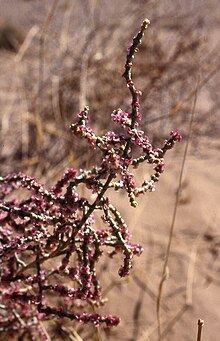| Salsoloideae | |
|---|---|
 | |
| Salsola oppositifolia , in fruit | |
| Scientific classification | |
| Kingdom: | Plantae |
| Clade: | Tracheophytes |
| Clade: | Angiosperms |
| Clade: | Eudicots |
| Order: | Caryophyllales |
| Family: | Amaranthaceae |
| Subfamily: | Salsoloideae Raf. |
| Genera | |
About 35 genera, see text | |
The Salsoloideae are a subfamily of the Amaranthaceae, formerly in family Chenopodiaceae.





